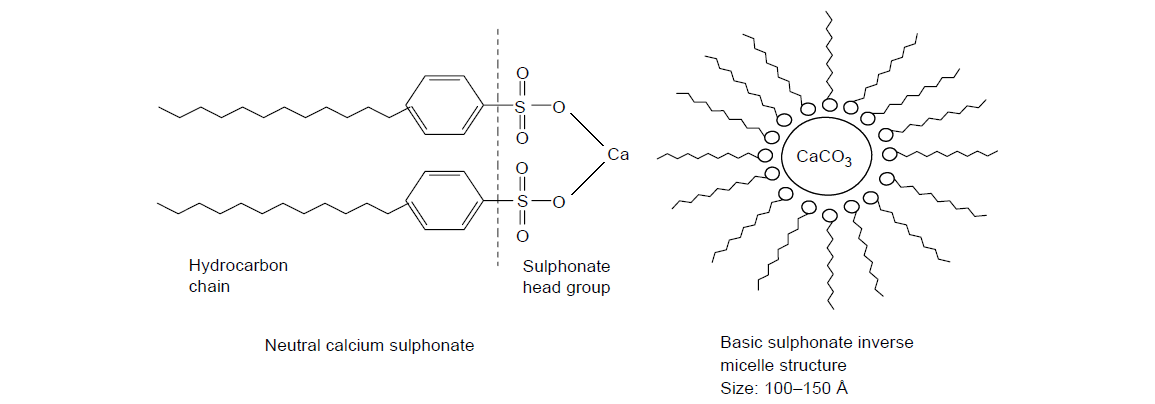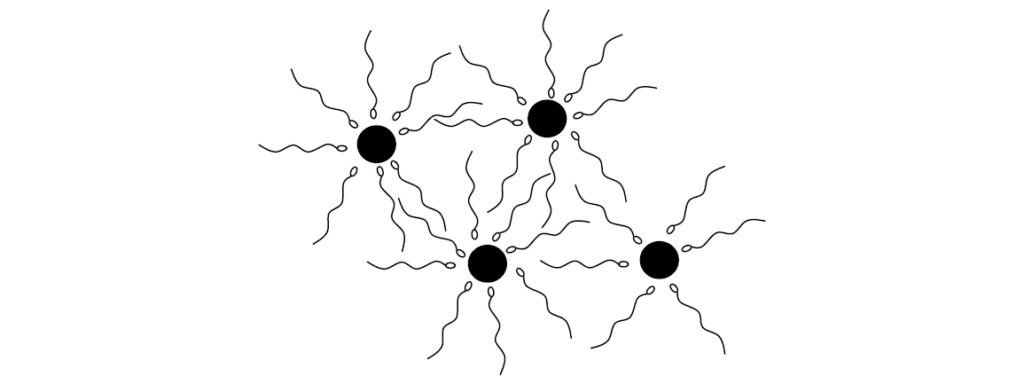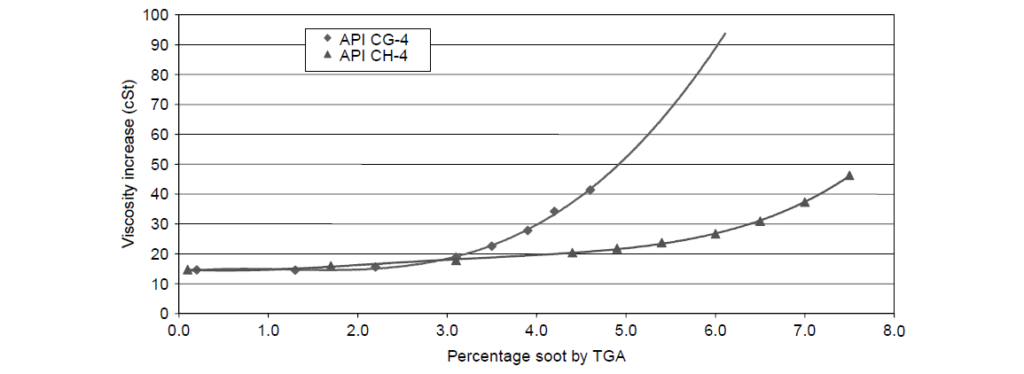Endless Improvements
العربية
Additives for Engine Crankcase Lubricant Applications
Engine oils make up nearly one-half of the lubricant market and therefore attract a lot of interest. The principal function of the engine oil lubricant is to extend the life of moving parts operating under different conditions of speed, temperature, and pressure.
Contaminants pose an additional problem, as they accumulate in the engine during operation. The contaminants may be wear debris, sludges, soot particles, acids, or peroxides. An important function of the lubricant is to prevent these contaminants from causing any damage.
To function effectively, the lubricant needs chemical additives as well as base oils. Depending on the application, various combinations of additives are used to meet the required performance level; the most important ones are listed as follows:
| ● Detergents. | ● Dispersants. | ● Antiwear. | ● Antioxidants. | ● Viscosity modifiers. | ||||||||||
| ● Pour point depressants. | ● Foam inhibitors. | ● Anticorrosion. | ● Antirust. | ● Demulsability. |
Detergents
Detergents play an essential role in protecting various metallic components of internal combustion engines by neutralizing acidic compounds formed during combustion processes. Detergent treatment in engine lubricant can reach 6–10 wt%.
Why are these specific functions critical to engine durability?
Coke and varnish-like deposits can restrict the piston rings’ free movement (allowing a portion of the combustion gases to pass into the crankcase), leading to heavy contamination of the oil, impacting engine out emissions and even causing piston seizure if the engine operates at high loads.
Heavy sludge can plug oil filters, leading to oil starvation and thus to catastrophic wear especially during cold temperature start-ups.
Acidic fuel combustion products can cause corrosion (oxides of sulfur in diesel engines and oxides of nitrogen in gasoline engines).
To satisfy the abovementioned requirements, practically all detergent additives contain:
Polar head: Hydrophilic, acidic groups (e.g., sulfonate, hydroxyl, mercapton, carboxylic, or carbonamide groups) that react with metal oxides or hydroxides.
Hydrocarbon tail: Oleophilic aliphatic, cycloaliphatic, or alkyaromatic hydrocarbon radicals that provide oil solubility.
One or several metal ions.

Although several metals have been incorporated into detergents, only three metal cations are now commonly used—calcium, magnesium, and sodium. Heavy metals such as barium are no longer used. Most modern motor oils contain combinations of several detergent types, which are selected to give optimum performance.
| Sulfonates: The salts of long-chain alkylarylsulfonic acids are being widely used as detergents. Basic calcium sulfonates make up 65% of the total detergent market. |  |
| Phenates and Salicylates: Basic phenates make up 31% of the total detergent market. |  |
Performance in Lubricants:
One of the primary functions of over-based detergents is to neutralize acidic combustion by-products:
The use of high TBN, over-based detergents can combat these problems. Plotting data from a recent passenger car field test showing the decrease in TBN and the increase in TAN with use. It is considered desirable to change the oil before the TBN and TAN cross. In this “severe service” example, the oil that starts at a TBN of 6 would need to be changed twice as often as the oil that has an initial TBN of ∼9. Evidence such as this results in oils with higher TBN being recommended for longer drain intervals.

A second function of a detergent is to retard deposit formation on engine parts:
Detergency of diesel engine oils is evaluated using both single-cylinder engine tests (Caterpillar 1N, 1K, 1P, and 1Q) and multicylinder engine tests (Cummins M11, Mack T-9, and T-10).

The selection of detergents to give the best piston and ring cleanliness is highly dependent on the temperature of the piston ring area, the metallurgy of the piston, the ring pack design, and the base stock of the lubricant being tested. Metallurgy variances in engine designs such as aluminum versus articulated steel diesel pistons complicate proper detergent selection. A particular mixture of detergents may be excellent with aluminum hardware but may only perform marginally with steel hardware.
Dispersant (Ashless Detergents):
The principal function of a dispersant is to minimize the deleterious effects of contamination ensuring that the oil flows freely and the engine keeps clean. In modern top-quality engine oil formulations, dispersant will range from 3 to 6% by weight. Typically, this would account for ~50% of the total oil additive in the lubricant.
Dispersant Structure:
Dispersants consist of an oil-soluble portion and a polar head group. The polar group is attached to the oil-soluble group by means of a hook.

The following list, although not exhaustive, covers the most popular types of dispersant chemistries in use today:
Polyisobutenyl succinimide.
Polyisobutenyl succinate ester.
Mannich dispersants.
Dispersant viscosity modifiers (VMs).
Soot Contamination in Diesel Engine Oil:
The soot contaminants in heavy-duty diesel engines usually appear when:
The engine is operating under very high loads
The fuel injection is retarded (i.e., injected late in the cranking cycle).
The level of soot in diesel engine oil is trended higher as a result of new engine technologies designed to reduce NOx and particulate emissions. The retarded fuel injection has been one of the main strategies employed by OEMs to reduce NOx emissions, which has resulted in more unburned fuel entering the crankcase oil as soot particles. Combined with extended oil drain intervals, it is not unusual to see soot levels as high as 5% in certain types of duty cycles.
Under specific engine conditions, the small soot particles, typically <200 nm, will agglomerate into a larger macrostructure leading to a significant rise in oil viscosity.
The mechanism whereby dispersant perform can be represented by the basic dispersant molecule attaching itself to an acidic site on the surface of the soot particle. Assuming that there are sufficient dispersant molecules attached to the soot particle, the dispersant chains will prevent the soot particles from coming together.

Soot-Thickening Tests:
For heavy-duty diesel engine oils [Mack T-8E Test]:
This test used to evaluate soot-mediated oil thickening for a low-emissions engine. As the engine technologies progressed to lower emission levels, more severe tests were introduced into API CG-4, CH-4, and API CI-4 specifications.
| Engine Oil Category | Engine Test | Limits |
| API CF-4 | Mack T-7 | ≤ 0.04 cSt/h (last 50 h of test) |
| API CG-4 | Mack T-8 | ≤ 11.5 cSt at 3.8% soot |
| API CH-4 | Mack T-8E | ≤ 2.1 × sheared viscosity at 4.8% soot |
| API CI-4 | Mack T-8E | ≤ 1.8 × sheared viscosity at 4.8% soot |

For light-duty diesel engine oils[Peugeot XUD-11 BTE Test]:
This test is used to measure oil thickening at soot levels up to 4%. The test makes a good measure of the ability of the oil to minimize oxidative soot thickening for small European diesel engines. Criteria have also been applied to the Mercedes OM602A, OM364LA, and OM441LA diesel engine tests in respect of soot-related oil thickening and sludge control.
Seal Testing:
The balance between soot handling and seal compatibility has provided lubricant formulators with significant challenges especially as seal testing is a major part of the oil approval process in Europe.
The most difficult issue to contend with is that the highly basic dispersants are aggressive toward fluoro-elastomer seals. There are many fluoro-elastomer seal tests, one common example being the Volkswagen PV3344 test, which is a requirement for Volkswagen oil approvals. There are also seal test requirements for most of the European engine manufacturers, for example, Mercedes-Benz, MAN, and MTU and collectively through the ACEA.
| Formulation | A | B | C |
| Max variation of AK6 Viton | |||
| Hardness (Shore A) | -3 | 0 | 1 |
| Volume (%) | 1 | 1 | 0.9 |
| Tensile strength (%) | -8 | -32 | -46 |
| Elongation rupture (%) | -15 | -33 | -38 |
| Pass | Pass | Borderline fail | |
Corrosion:
Another potential drawback with high TBN dispersants is that they tend to be more aggressive toward Cu/Pb bearings. This has led some additive companies to treat their dispersants with boron compounds, for example, boric acid to reduce Cu/Pb corrosion. In some cases, this can improve the antiwear properties but usually reduces the effectiveness of the dispersant at dispersing soot. Clearly a balance has to be found, and formulators will use different dispersants to meet the various requirements.
Sludge:
The lubricant degrades as it is exposed to oxygen and elevated temperatures. The byproducts of this reaction form highly reactive compounds that further degrade the lubricant. Their byproducts react with other contaminants, forming organic acids and high-molecular-weight polymeric products. These products further react, forming the insoluble product known more commonly as sludge.
Under certain conditions, sludge will accumulate in an internal combustion engine:
Fuel quality.
Extended oil-drain intervals.
Drive cycles.
Redirection of blowby gas into the rocker cover.
Sludge build up can spread throughout the engine, leading to reduced oil flow through the filter and drain-back holes on the valve-deck. In extreme situations, this will lead to engine seizure. The problems were not linked to poor-quality lubricants. However, as lubricant technology evolved, it was found that newer lubricant formulations could help alleviate the problem.
Sludge formation is reduced by the addition of basic dispersants particularly the high-molecular-weight types (to neutralize sludge precursors).
Sludge Engine Tests:
| Test | Cylinder Configuration | Displacement [cc] | Test Duration | Test Operation | Duration [h] | Speed [rpm] | Power [kW] | Coolant Temp. | Oil Temp. | Fuel Type |
| Sequence IIIE (Buick) | V-6 | 3800 | 64 | Steady Speed | 64 | 3000 | 50.6 | 115 | 149 | Phillips GMR leaded gasoline |
| Sequence IIIF (Buick) | V-6 | 3800 | 80 | Steady Speed | 80 | 3600 | 75.0 | 115 | 155 | Howell EEE unleaded |
| Sequence VE (Ford) | I.L. -4 Slider Follower | 2290 | 288 | Cyclic | 2.00 | 2500 | 25.0 | 51.7 | 68.3 | Phillips J unleaded gasoline |
| 1.25 | 2500 | 25.0 | 85.0 | 98.9 | ||||||
| 1.25 | 750 | 0.75 | 46.1 | 46.1 | ||||||
| Sequence VG (Ford) | V-8 Roller Follower | 4600 | 216 | Cyclic | 2.00 | 1200 | 69 kPa | 57 | 68 | Unleaded gasoline |
| 1.25 | 2900 | 66 kPa | 85 | 100 | ||||||
| 1.25 | 700 | Recorded | 45 | 45 | ||||||
| Mercedes-Benz M-111E Sludge | I.L. -4 | 1998 | 224 | Cyclic | 48 h cold | Idle to 5500 | Idle to max. | 40 – 98 | 45 – 130 | CEC RF-86-T-94 (ULG) |
| 75h WOT | ||||||||||
| 100 h cyclic | ||||||||||
| Nissan VG-20E | 2000 | 200 | Cyclic | 200 | 800 – 3500 | 2-9 kgf m | 38 – 100 | 50 – 117 | Unleaded gasoline | |
| Toyota 1G-FE | 2000 | 48 | Steady Speed | 48 | 4800 | 6 kgf m | 120 | 149 | Unleaded gasoline |
Antiwear:

Facebook Comments